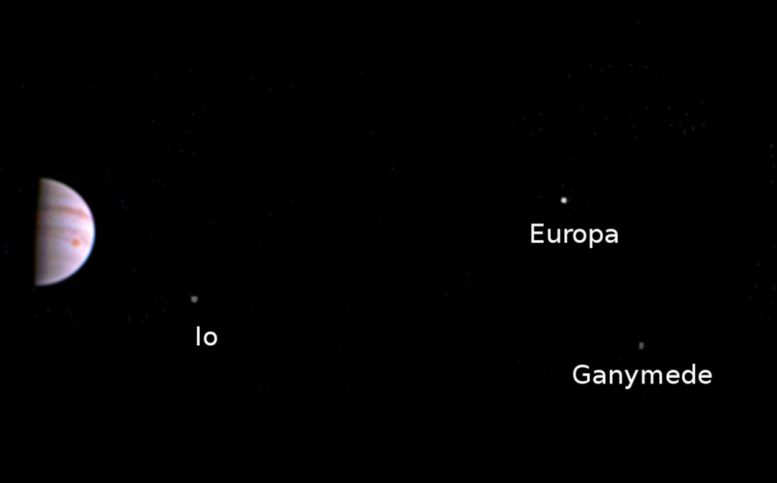
This color view from NASA’s Juno spacecraft is made from some of the first images taken by JunoCam after the spacecraft entered orbit around Jupiter on July 5th (UTC).
The first high-resolution images of Jupiter are still several weeks away, but NASA’s Juno Spacecraft did capture this new image as it entered orbit around the planet.
The JunoCam camera aboard NASA’s Juno mission is operational and sending down data after the spacecraft’s July 4 arrival at Jupiter. Juno’s visible-light camera was turned on six days after Juno fired its main engine and placed itself into orbit around the largest planetary inhabitant of our solar system. The first high-resolution images of the gas giant Jupiter are still a few weeks away.
“This scene from JunoCam indicates it survived its first pass through Jupiter’s extreme radiation environment without any degradation and is ready to take on Jupiter,” said Scott Bolton, principal investigator from the Southwest Research Institute in San Antonio. “We can’t wait to see the first view of Jupiter’s poles.”
The new view was obtained on July 10, 2016, at 10:30 a.m. PDT (1:30 p.m. EDT, 5:30 UTC), when the spacecraft was 2.7 million miles (4.3 million kilometers) from Jupiter on the outbound leg of its initial 53.5-day capture orbit. The color image shows atmospheric features on Jupiter, including the famous Great Red Spot, and three of the massive planet’s four largest moons — Io, Europa, and Ganymede, from left to right in the image.
“JunoCam will continue to take images as we go around in this first orbit,” said Candy Hansen, Juno co-investigator from the Planetary Science Institute, Tucson, Arizona. “The first high-resolution images of the planet will be taken on August 27 when Juno makes its next close pass to Jupiter.”
JunoCam is a color, visible-light camera designed to capture remarkable pictures of Jupiter’s poles and cloud tops. As Juno’s eyes, it will provide a wide view, helping to provide context for the spacecraft’s other instruments. JunoCam was included on the spacecraft specifically for purposes of public engagement; although its images will be helpful to the science team, it is not considered one of the mission’s science instruments.
The Juno team is currently working to place all images taken by JunoCam on the mission’s website, where the public can access them.
During its mission of exploration, Juno will circle the Jovian world 37 times, soaring low over the planet’s cloud tops — as close as about 2,600 miles (4,100 kilometers). During these flybys, Juno will probe beneath the obscuring cloud cover of Jupiter and study its auroras to learn more about the planet’s origins, structure, atmosphere, and magnetosphere.
NASA’s Juno spacecraft captured a unique time-lapse movie of the Galilean satellites in motion about Jupiter. The movie begins on June 12th with Juno 10 million miles from Jupiter and ends on June 29th, 3 million miles distant. The innermost moon is volcanic Io; next in line is the ice-crusted ocean world Europa, followed by massive Ganymede, and finally, heavily cratered Callisto. Galileo observed these moons to change position with respect to Jupiter over the course of a few nights. From this observation he realized that the moons were orbiting mighty Jupiter, a truth that forever changed humanity’s understanding of our place in the cosmos. Earth was not the center of the Universe. For the first time in history, we look upon these moons as they orbit Jupiter and share in Galileo’s revelation. This is the motion of nature’s harmony.

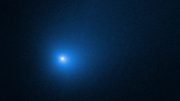
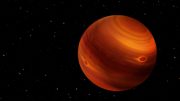
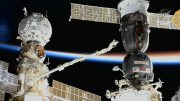
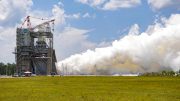

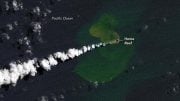
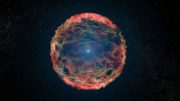

Well! Juno spacecraft has come to Jupiter. It will dig out details about Jupiter’s floor whether it is solid or liquid. Jupiter is a failed star as we know. Hence the planet chemistry should be that of Sun which failed to burn through. Before cooling off the planet should give out lot of gases both in the atmosphere and from its bosom also. The formation of gases from Hydrogen should follow the periodic table,(H,He),Li,Be,B,(C,N,O),F,Ne,Na,Mg,Al,(Si,P,S) Cl.Ar,K.Ca…depending on their reactive nature with other compounds when nucleo-synthesis is taking place. The abundance of gases in this hierarchy should be from H,C,N,O namely CO2,N2,O2, CH4(Methane) ,NO etc and from the heavier terrestrial materials Si (Silicon) which forms most of the planets’ surface and Highly reactive P and S which combines with Oxygen to give H2S, SO2 , Phosphene gas etc which gives color to the atmosphere. If the planet has sufficiently cooled of silicon di oxide terrain would have been formed . Still volcanoes would spew up Sulphur di oxide and Phosphene in the atmosphere. This is precisely the reason for the red stripes on the planet. The white stripes show that they are ammonia in circulation. Laws of Physics say that if you go up in the atmosphere the cooling will take place automatically even if the terrain is hot. Hence it is extremely cold in the troposphere and very hot in the terrain, probably liquid or even solid with volcanoes erupting. Jupiter is a giant planet and it revolves in 11 hours and the atmosphere around it should also circulate in extreme high speed, pulled by its gravity. This gives straight bands and red belts on it. The great red spot is due to the cyclone and anticyclone activity as a reaction which lasts for centuries . All the small white circles represent only cyclones with no ground to react to the cyclone and neutralize. All giant planets are gas giants which also keeps a ring of gases around them besides multiple satelites like Saturn. Jupiter, Uranus and Neptune also are in the same category. In Uranus and Neptune the ground has already cooled off and we don.t know about very big giants Saturn and this Jupiter. Let Juno bring out all the facts to the extent possible before it dies off during the plunge finally which is inevitable. Thank You.